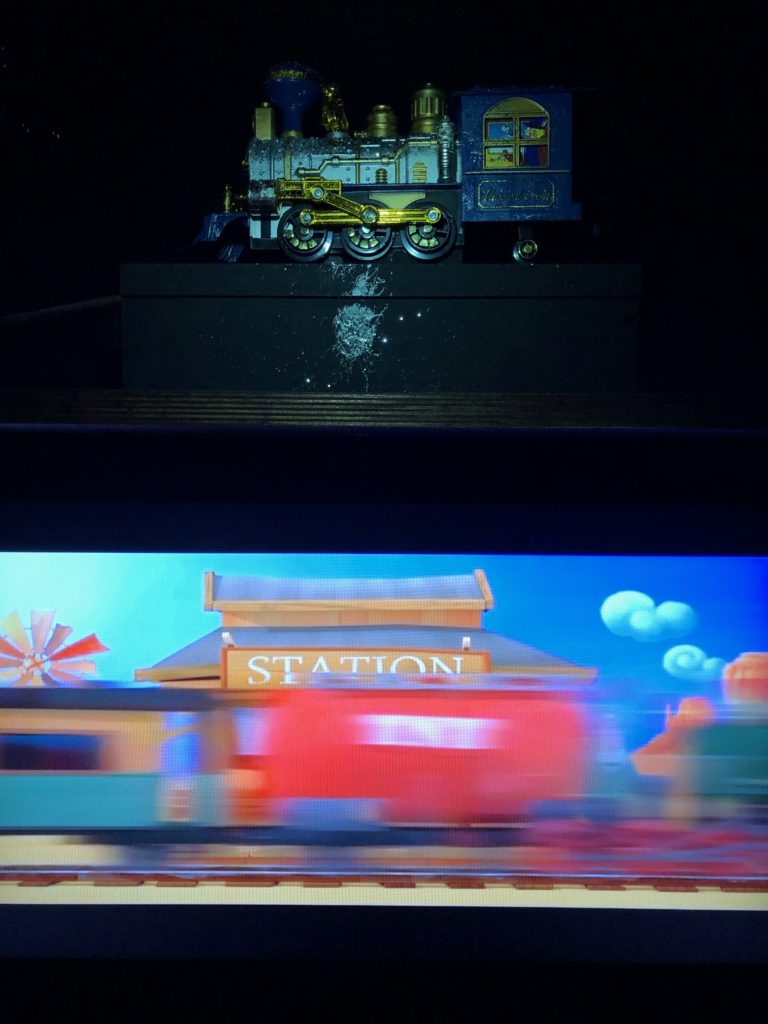Category Archives: Allgemein
Das 2019 Ars Electronica Festival findet von September 5-9, 2019 in Linz, Österreich mit dem Thema „Out of the Box. The Midlife Crisis of the Digital Revolution“ statt. https://ars.electronica.art/outofthebox/
Die Ars Electronica feiert ihren 40igsten Geburtstag. Wie immer werden Zukunftsthemen angesprochen und in Linz dargestellt. Der Hauptort des Festivals ist die POSTCITY, das ehemalige Logistikzentrum der Post direkt am Linzer Hauptbahnhof. Ein grosses Areal, der Besucher wird zwei Tage sicherlich dort verbringen, sollte der Ehrgeiz bestehen fast alles, oder viel zu sehen. Alles geht kaum, das Areal ist verwinkelt, die Kraft des Besuchers begrenzt, die Aufnahmefähigkeit ebenso.
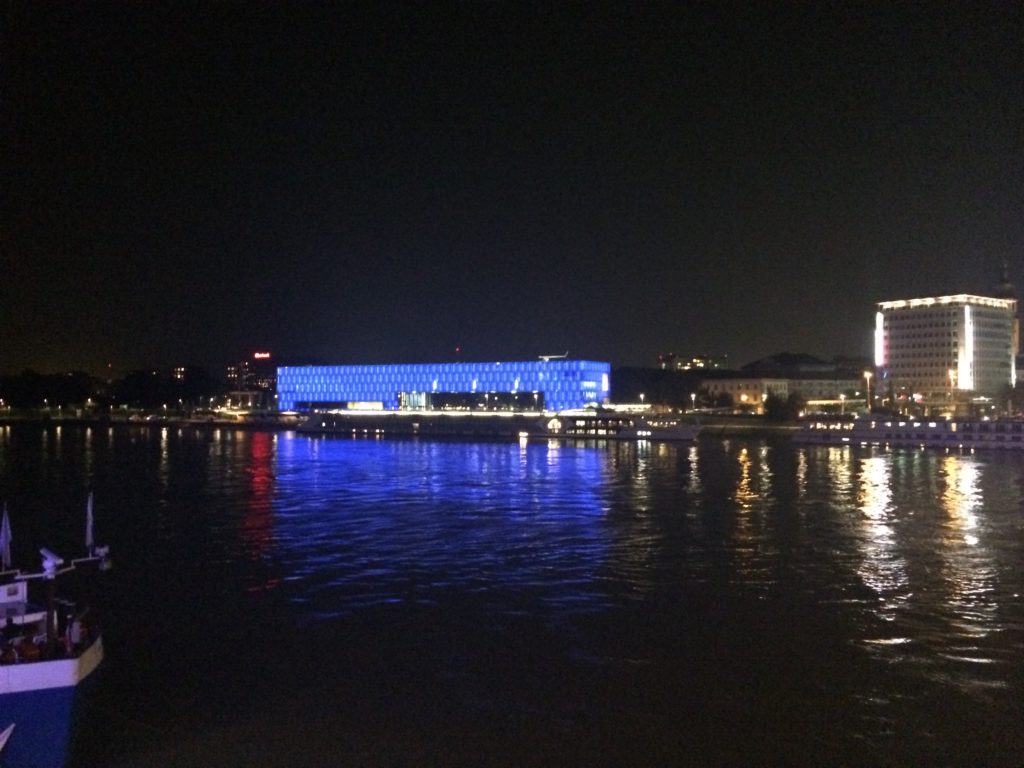
Es gibt eine Festivalmeile in der Innenstadt, im Linzer Mariendom, im OK und OÖ Kulturquartier sind Ausstellungen und Exponate zu erkunden. Das Lentosmuseum, die Kunstuniversität Linz, der Donaupark, die Stadtwerkstatt und das Ars Electronica Center, neu gestaltet und ausgestattet. In der Anton Bruckner Privatuniversität finden in der Regel die musikalische Ereignisse Platz und statt.
Das ist eine lange Liste von Orten. Die Autorin ist regelmässig vor Ort, wenngleich in diesem Jahr auf Grund von der Gesundheit, die Teilnahme nicht gegeben ist. Schade, das Bedauern ist gross.
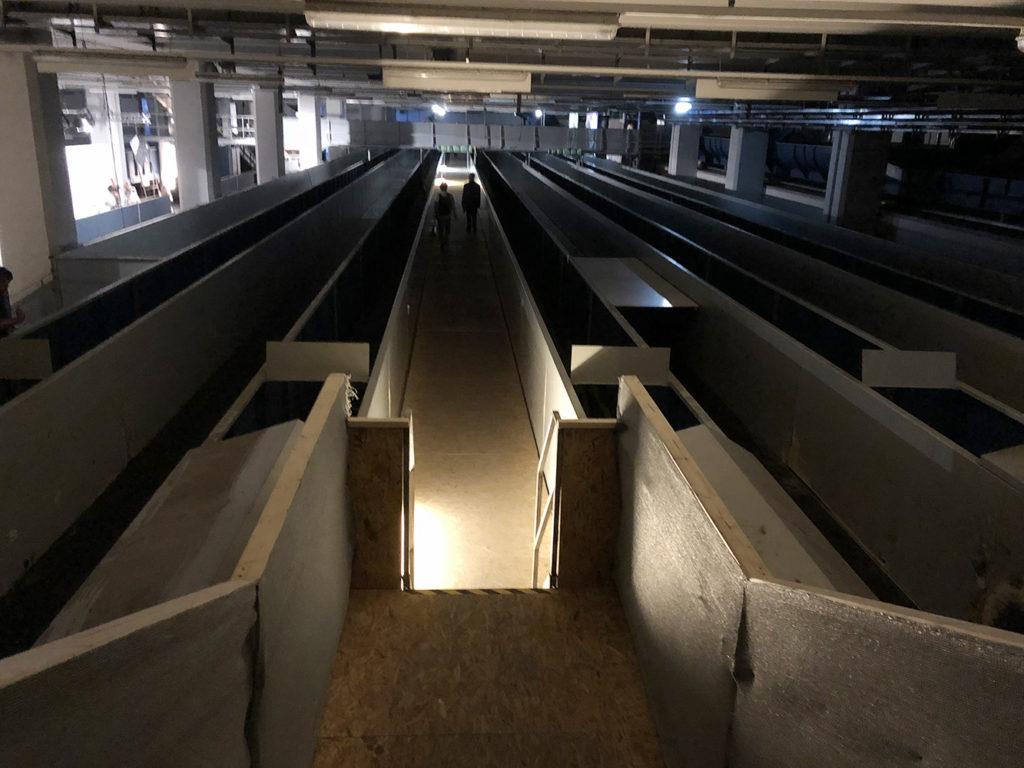
Die Ars Electronica ist in Europa, so behautet die Autorin, das angesehenste Medienfestival. Dort werden das künstlerische Denken und Handeln, auf den Prüfstein gelegt, es werden Wissenschaft und Forschung mit Medien und Kunst verwoben. Dieser Ansatz ist in keiner Weise neu, waren die Künste und die Wissenschaften schon im 15. Jahrhundert eng miteinander verheiratet. Nachdem jedoch jahrelang die Technologien die Forschung, den Kanon der Welterkundung angeführt haben, kommt es zu einer Rückbesinnung. Geistes- und Kunstwissenschaft finden Beachtung. MINT, das Schlagwort schlechthin, dominierte Studienfächer und Fakultäten, Geistes- und Kunstwissenschaften taten und tun sich schwer. Die Autorin hegt eine berechtigte Hoffnung, dass ein Umdenken stattfindet. Denn Funktion und Bestimmung, Ausrichtung und Wertigkeit werden nicht nur von einer Seite bestimmt. Es kommen grundsätzlich interdisziplinäre Ansprüche zum Tragen. Genau das findet statt, die Konzeptionen in der Kunst, die Bestimmungshilfen und die Ausdruckskraft einer Aussage werden berücksichtigt. Es geht nicht nur um das Ausreizen einer Technologie, es geht um den Menschen. Was macht, darf, kann und soll der Mensch mit Erfindungen anstellen? Wofür ist etwas gut, warum soll etwas entwickelt und vertiefend erforscht werden?
Diesem Anspruch hat sich die Ars Elecronia nie verschlossen, deshalb ist das Festival wichtig und tragend.
Autorin: Prof. Ursula Drees
- CREDITS für den Trailer des Als Electronica centers:
Doing Nothing with AI, Emanuel Gollob (AT) last breath, Dmitry Morozov / ::vtol:: (RU) COMMON SENSE, Kevin Strüber (DE) data.tron, Ryoji Ikeda(JP) Lasermice, So Kanno (JP) Putting the Pieces Back Together Again, Ralf Baecker (DE) CRYPTID, Michael Candy (AU) KIDS, Michael Frei (CH), Mario von Rickenbach (CH)/Playables bitTOWER, Wu Juehui(CN) Poise→[d], Dmitry Morozov / ::vtol:: (RU) Egg, Martina Scarpelli (IT) Programmable Droplets, Udayan Umapathi (IN/US) MODELL 5, Kurt Hentschläger(AT), Ulf Langheinrich(DE) The Object of the Internet, Projet EVA — Etienne Grenier (CA), Simon Laroche (CA) BALLET #1, Akinori Goto (JP) Namahage in Tokyo, Etsuko Ichihara (JP), ISID OPEN INNOVATION LAB. (JP) STAR VALLEY, Marko Peljhan (SI), Matthew Biederman (CA/US) tx-reverse 360°, Virgil Widrich (AT), Martin Reinhart (AT) nimiia cétiï, Jenna Sutela (FI) LeveL II, mischer’traxler studio (AT) Living Mirror, C-Lab, Howard Boland (UK), Laura Cinti (UK) ELECTRONICOS FANTASTICOS!, Ei Wada (JP) Große Konzertnacht: The Berlioz Project Video Edit: Ars Electronica / Yazdan Zand Music: Karl Julian Schmidinger Ars Electronica https://ars.electronica.art/https://www.facebook.com/arselectronicahttps://www.twitter.com/arselectronicahttps://www.instagram.com/arselectronicahttps://www.flickr.com/photos/arselec…
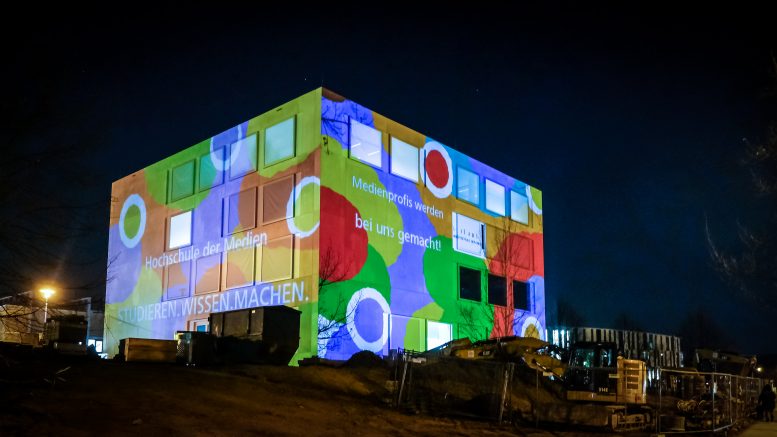
Seit 40 Jahren gibt es den Studiengang Audiovisuelle Medien. Und in diesem Jahr, genauer, am Donnerstag, der 4. 7 auf der Medianight werden einige Projekte und Produktionen das Thema behandeln. Auch die Studioproduktion EventMedia. Sie beschäftigt sich mit interaktiven Erlebnisräumen. Manche sagen auch Kommunikation im Raum zu dieser Art der medialen Kommunikation.
In dieser Produktion geht es nicht ausschliesslich um das Bestehen des Studiengangs, sondern die Gruppe stellt die Frage, ob technische Entwicklungen die inhaltlichen überschatten. Denn gerade mit den Medien werden ununterbrochen neue Technologien erfundenen und dann natürlich auch in einem künstlerischen Kontext dem Publikum präsentiert. Und wie oft passiert es, dass der Besucher vor der Technik, einer besonders großen, hochauflösenden LED Wand zum Beispiel staunend stehen bleibt und ganz vergisst auf Inhalte zu achten. Oder im Umkehrschluss, manche Werke präsentieren technische Neuheiten jedoch die zu vermittelnde Geschichte wird stiefmütterlich behandelt. Jeder kennt es vom Film, wo es eine Unzahl von Festures gibt, die mit Special Effects um sich werfen, Roboter morphen in Sekundenschnelle oder anderes sonst Unmögliches geschieht und wird sichtbar. Aber wenn nach der inneren Tiefe gefragt wird, kommt oft gar nichts dabei heraus. Die Effekte begeistern, der Rest ist irrelevant. Diesen Konflikt bespricht die Studioproduktion Eventmedia mit dem Titel: „Applied Magic“ an. Applied Magic steht gleichzeitig für Audiovisuelle Medien, das weiss der Eingeweihte, denn in der Hochschule werden die Studiengänge gerne abgekürzt. So heissen die Medienwirtschaftler kurz MWler, die Audiovisuellen sind die AMler.
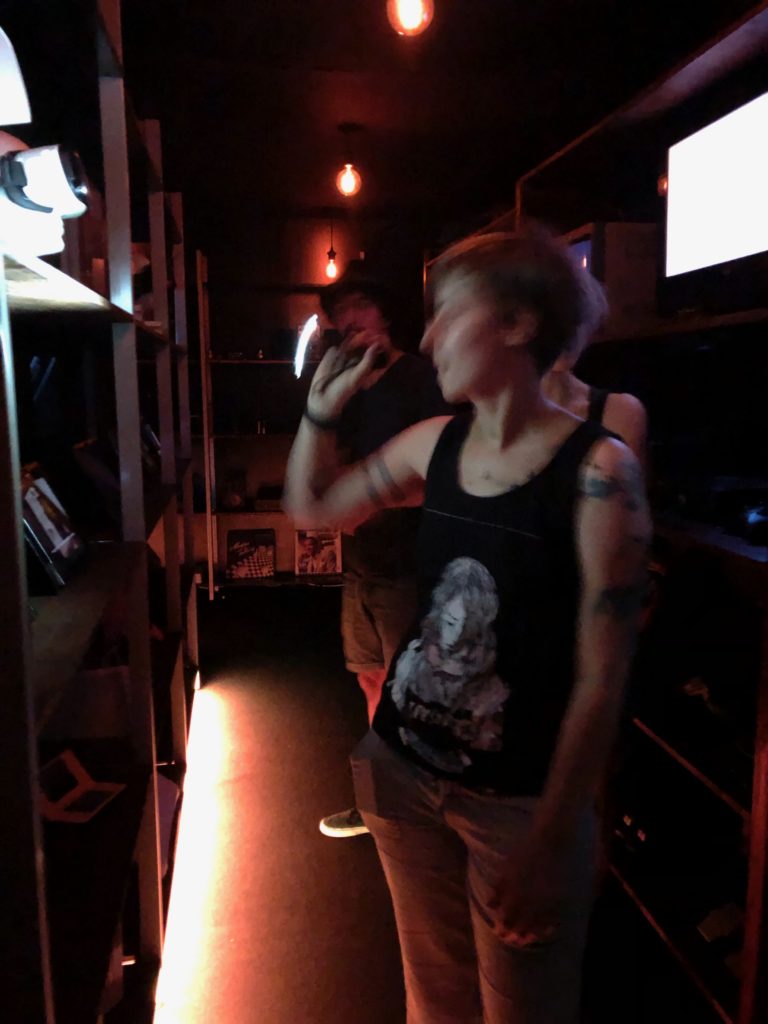
Es wird eine Archivreise unternommen. Technische Geräte, längst vergessen, lassen Erinnerungen aufkommen. Walkman, Plattenspieler, VHS Kamera, Photokameras, Diaprojektoren sind zu sehen.

In einem Miniaturfotostudio, in 3 D gedruckt, gehen die Lichter an und eine Büste kann fotografiert werden. Es geht durch 4 Gänge, zeitgleich werden Studioproduktionen, studentische Arbeiten aus den Jahren präsentiert.
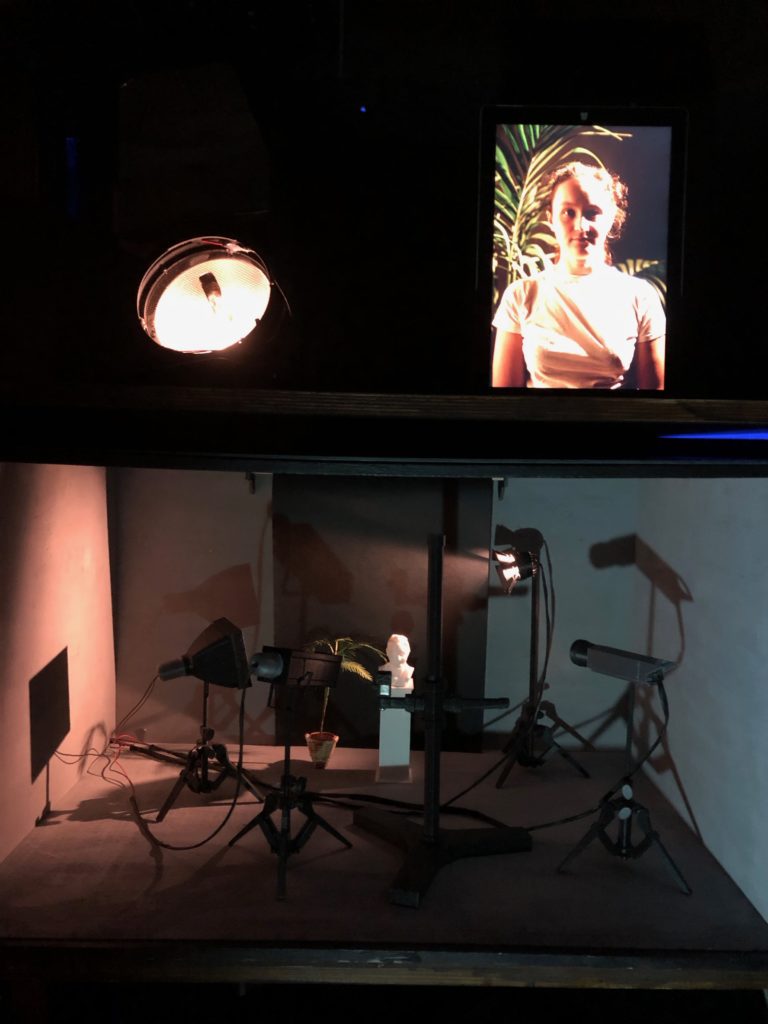
Im Innenraum dieser Installation befindet sich ein Hohlraum, das Herz im eigentlichen Sinne. Es wird nicht betreten, aber man darf hinein schauen. Dort befindet sich ein Kopf. Von ihm gehen Impulse aus, sie führen mit LED Tubes zu Händen, die wieder mit LED Leuchtschläuchen in die Archivregale führen. Der Mensch als Artefakt, ein Kopf mit der Hand am LED Arm. Hier wird eine künstlerische Position beschrieben.
Es wird spannend in 2 Tagen, denn neben dieser Produktion gibt es wie zu erwarten noch viele mehr. Kommt doch.
- Hochschule der Medien
- Nobelstraße 10
- 70569 Stuttgart ab 18 Uhr
Photographien©Ursula Drees
Beitrag von Ursula Drees

At the fmx we interviewed Jenn Duong, Trisha Gum and Simon Griesser. And next to these interviews, we asked about their ideas concerning 5 general topics.
Artificial Intelligence
Meaningful Storytelling
Responsible Media
Authenticity of Media
Tools and Engines
Robotics
Here are the answers in comparison. Please scroll.
1rst Jenn Duong
2nd Trisha Gum
3rd Simon Griesser
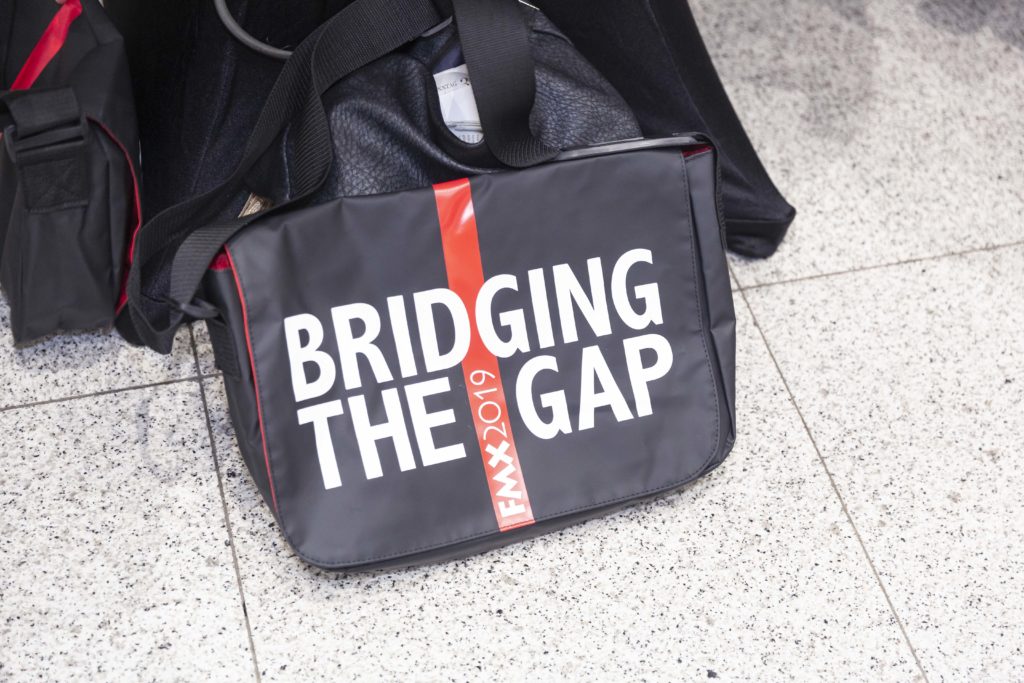
Artificial Intelligence:
It is something we need to start thinking now and something to start thinking thoughtfully about now because of the ethical implication. I think technology serves to make our lives easier and to make us more efficient. I am actually very excited for AI. I think it is going to enable people to do a lot of things that they couldn’t do before like e. g I am not a musician but there are artificial intelligence algorithms and programs that could help me write songs and I think that’s really unique. My biggest concern with AI is for the industry , but for the mainstream audience still think it is so far away but it is not like it is right here at our doorsteps. We all have AI in our phone we have Siri, we have Alexa at home, we have google homes, and so I think it is just something that we as people who are going to be using our technology really need to make a more concerted effort to think about the data, the privacy and what are – again – the ethical implications of this technology. Where can it go. We do need to go to the dark places like this could potentially be a utopian world or a utopian World. It is going to be up to us to dictate what route it takes. Jenn Duong
It’s something that excites me and scares me at the same time. Hopefully as humans we figure out a way to use it and develop it responsibly.
Trisha Gum
Super, I love it. It makes me think a lot and makes me focus a lot on what I actually am and why I’m special, so that I can’t be replaced as such. This is for every artist, figuring out what’s your subjective personal thing that can’t be replaced. But then I’m also looking forward to processes that go really fast in the future, like I would love to have a computer that works on voice command and creates all the images that I have in mind. That would be beautiful. Simon Griesser
Meaningful Storytelling:
It is hard. (Smiling) Storytelling is not easy and I think a lot of people don’t realise that is not easy. But it is special. I love watching stories, I love watching stories, I love reading stories, working with stories. It is something that I hope one day I do really, really well. Jenn Duong
I think it is important. It’s something that we need in our culture and I think right now people are excited to hear different points of view and excited to hear meaningful storytelling. I think our world needs it globally, so it’s something that should be embraced, promoted and continued. Trisha Gum
It’s good, hard. I think the storytelling needs to pull me in, which doesn’t mean that it’s meaningful. But it has something that I’m just dragged in, dragged along the road and then I’m spit out on the other side. This could be for educational reasons, could be for advertising or for entertainment. Sometimes I want something from this side, something from that side. Simon Griesser
Responsible Media:
Oh God (smile). I have a lot of thought about this – Let me streamline them real quick. (Time passes and she thinks). When I think about responsible media I start thinking about the fake news, I start thinking about opinion news, I start thinking about big data, in terms of like how a lot of social media platforms sell their data to advertisers and how that starts. And then they use media marketing campaigns to target us. And I think big media is corporations and corporate responsibility . It is a really large topic that quite frankly I feel is really hard to cover in just a few words but responsible media —- it worries me because I don’t feel like most people are looking at media that way. Even like the social good stories right…Like Gillette recently did an ad for a new razer that was about men and how to be a good guy. ….
I personally really loved the ad and I personally thought that it was a great piece of media and storytelling but then I started thinking about this and that Gillette do this because these are actually their values or is Gillette doing this to ride on top of the tide of social chance that is currently happening or is it PR? Big topic lot of thoughts (smile) . Those were the general once (smile). Jenn Duong
I have a lot to say about that, so it’s hard to hone it in. I think media is something that can be so powerful, it can be used for good and it can be used for bad. And so I think it’s something as a culture and as a global community we need to start to understand how to be responsible about media. I know there is like online bullying and all these things that we didn’t really understand at the beginning of media and putting things out there. So really trying to maintain it in a way that is positive for our world rather than negative, I think is our responsibility as humans and filmmakers, as creators. Trisha Gum
I think responsible, educated consumers is much more important. We are overwhelmed by content every day and we just feed ourselves with nonsense every day and we have to learn. I think in the new generation everybody grows up with the techniques, learns automatically to filter out and then the way we filter and what’s our filter is actually important. And that’s the educated consumer, that knows what to choose or pick from. Simon Griesser
Authenticity of Media:
Same thoughts. (smile). Couse I think authenticity and responsibility they kind of go hand in hand. You know I think we as storytellers have responsibility to tell authentic stories and to tell the stories that are ours to tell I think. Authenticity blends itself really well when you do something really responsible. I don’t know if that makes sense. Jenn Duong
Wow, that. Gosh it’s so interesting right now in this time, because it is confusing of what to believe in media, so I think that is a complicated issue that would be great for sociologists to really start digging into. I guess that’s such a big topic. Trisha Gum
Authenticity goes back to just the persons who create something. Just don’t hide it. When there is something beautiful, like we had in the spot the cell frame animation, put it up front. Yesterday on the panel discussion [concept art panel] especially this was a topic, about bringing the concept artist up front, to show that they actually contributed and had their authentic piece in it. Simon Griesser
Tools and Engines:
Like Unityand Unreal? Lot of great tools out there, lot of great engines and my mind goes out to Elon Musk and the tools that he is creating. But (ahm) keep it topic specific. I think it is really exciting because technology is getting to a point where tools and technology is advancing at a rate unlike before. Like, when you think about the iPhone like 10 years ago and where it is now? This is insane, we basically have a supercomputer in our pocket. And when we think about the fidelity of virtually type lines, the fidelity of video games, just anything that is made in CG, like it is insane, how beautiful things in unreal look, how realistic things both inUnityand Unreallook. So it is a really exciting time to be working whether that is in VR or AR or any industry that is utilising these tools like we are groundbreaking we are doing some ground breaking things. (ahm) And I think that this going to get us to better stories and to a more immersive future. Jenn Duong
I’m excited to see them continue to develop in a way that is useful for us as creators. Trisha Gum
Tools are tools. What they are, you use them. And as far as you understand them in the beginning, just a quick test, enjoy them and if you can’t use them, move on to the next. But then also go back to it. It took me about 8 years to go and learn zBrush, since I went a certain way and then I quit again and thought I’m not going to be comfortable with the software as such, but eventually I pushed through. Simon Griesser
Robotics:
I God so.. I don’t know if this is directly to robotics but it is what come to mind, a eally good friend of mine, her name is Taryn Southern(https://www.imdb.com/title/tt6802922/), she just directed her first feature film documentary and that is called “ I am human” and she is talking about cyborgs. And it is talking about what happens when we start combining computer or like robots and integrating that into our own human bodies. I think what is really interesting is not a lot of people realize this but there are a couple of hundred thousand cyborgs walking among us today because they have medical devices implanted in them and that starts making me think about in the future what that like. Right now there a really great used cases for the medical field , right, but what happens when it is installing a supercomputer into your brain and everything is accessible just by looking out into your eyes. And then that makes me think about like what is the affordability of getting a feature like that. How at this point to be continued the divide the poor and the rich in terms of access and accessibility to this type of technology? And so like robotic is really cool, again we need to be very cautious and start thinking about the implications about that technology now rather than later. Jenn Duong
Robotics are starting to, in my opinion, hit a place where they’re starting to change and evolve who we are as humans. You know you see all these different robotic things, that are really changing the lives of people and how we make things and do things and experience the world and so I think it’s an exciting time right now to see it develop and what we can do with robotics. Trisha Gum
Goes together with AI and such right? I hope I don’t need a robot. But it would be good to have one. Robotics as such is a technical consequence of the development we’re in. When I think about robotics, the Boston Dynamics machines come to mind. Like the cheetah, the dog, and also the soldier runner. But I seem them as just an extension, the prosthetics that we have already, but robotics as such will eventually emerge with biological things and will all melt in such a way in the future. Simon Griesser
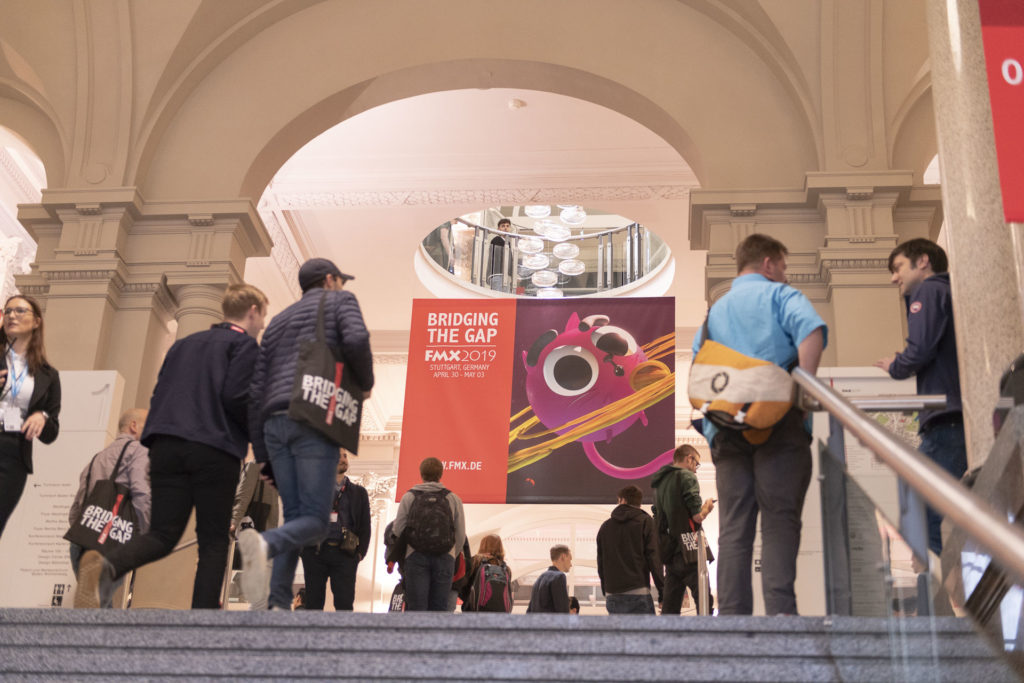
Interviews by:
Lisa Schubert ist a young illustrator and graphic designer from lake constance, studying at University of Media, Stuttgart to learn more about animation. She loves 2D animation and is never to be found without her sketchbook.
Malena Trachte is a young philosopher from Nowhereland. She recently started her studies at the University of Media in Stuttgart to find new and creative ways of storytelling, learning as much as possible about audio, visual and interactive media engineering.
Supervision
Ursula Drees ist seit 2008 Professorin für Mediengestaltung mit Schwerpunkt Event Media an der Hochschule der Medien in Stuttgart. Ihre Forschungsinteressen liegen im Bereich: Narration, Interaktion und Spiel im Eventmedialen Erlebnisraum. Nach dem Abschluss als Meisterschülerin und Diplom Designerin im Fach Visuelle Kommunikation mit dem Schwerpunkt Neue Medien an der Universität der Künste in Berlin arbeitete Ursula Drees in namhaften Firmen.
Stylized cinematography is the topic of Erik Smitt’s presentation at the fmx 2019. He considers cinematography as an important part of authoring. Therefore, he seemed to be very grateful to be involved early in the creative process and be able to set up lighting before animation. Erik is convinced that it makes a remarkable difference if he lights a scene like he would in a real set. Defining the range of movement in a lit scene supports authenticity and believability.
For “The Incredibles 2” Pixar Animation Studios, he carefully orchestrated contrast, camera movement, distance and framing. Traditional lighting techniques were pushed, an eye illumination system applied for caustics, haze and fog were used to enhance depth and color complexity and to add richness to the sets. He studied references of the 1960s and used shaped light like in Hitchcock movies, worked with silhouettes and various color temperatures according to the time of day.
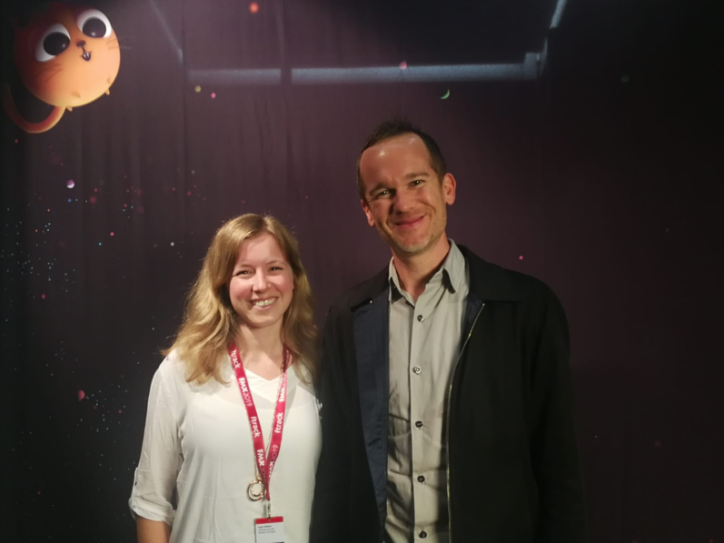
Photo©Peter Ruhrmann
Inga Wätjen, student at Stuttgart Media University, is interested in the challenges of creating a visual style for a sequel and Erik’s work as a DoP for animated features.
Interview: Inga Wätjen
Camera and sound: Peter Ruhrmann
Interview: Katja Schmid and Inga Wätjen
Camera: Peter Ruhrmann and Katja Schmid
Audio: Peter Ruhrmann
Editing: Katja Schmid and Inga Wätjen
Article written by Katja Schmid
About the sheer limitless grammar of storytelling in animation and visual effects
Once again FMX emphasized on the latest technical achievements and their artistic challenges and chances for animation and visual effects. In his humorous and philosophical keynote about bridging the gap (motto of this year’s FMX conference in Stuttgart)
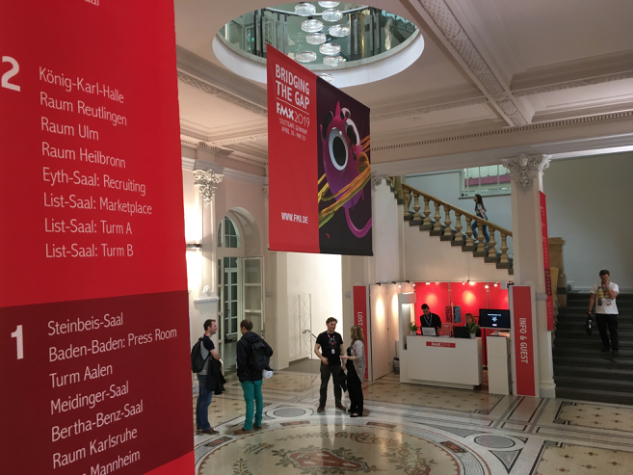
Dr. Jan Pinkava referred to the greek word for art which is τέχνη, and states: “Art is tech and tech is art”. Later in his talk he mentioned the “halo effect of technical difficulty” and addressed the stake of technology for the cinematic experience.
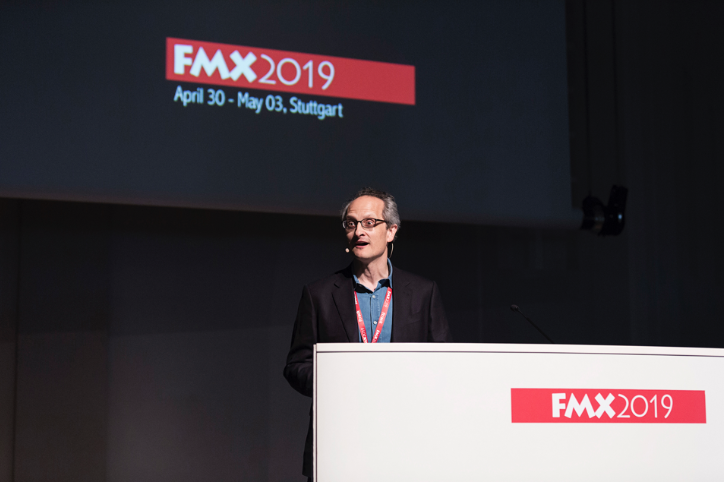
Photo©Dominique Brewing and Luzie Marquardt
Four days of FMX left an impressive mark how today’s filmmaking is driven by the speed of computing and algorithms just to impress and to capture the audience.
In fact, the power of computing has been used for two contrary creative poles of visualization: high abstraction through stylization and on the other side of the spectrum – authentic realism.
To mention the most popular example stylization first, the academy award winning animated feature production “Spider-Man: Into the Spider-Verse” employed newly developed tools to achieve the comic print look in the movie.
Once the general half tone style has been defined more artistic decisions had to be made to obtain the illusion of “print-film”. Thus, the team around VFX supervisor Danny Dimian tested new ways of substituting photorealistic motion blur (with rolling shutter imitation, animation in twos- twelve images per second, lines on edges) and innovative depth-of-field applications such as chromatic aberration, reducing level of detail, abstraction of background elements, smears and stretches and misalignment of color passes for defocus effects. Remapping illumination, hand painted look of highlights and displacement of colors supported the 2d-ish comic look. Read more about this in fxguide.
Moreover, machine learning algorithms have been used to graphic lines on the character’s faces. Lighting supported rich and bold colors, reflections were stylized and graphic elements such as actions lines, curves and scratches were added.
Another impressive example for stylization has been demonstrated by Kevin Baillie (Method Studios, Creative Director & Sr. VFX Supervisor)at FMX. Talking about the visual effects of the photoreal feature “Welcome to Marwen” directed by Robert Zemeckis, the seamless blend of humans and dolls was an impressive visual experience. Scanning the human actors, making a 3d print of their physical dolls, rescanning the dolls and merging real eyes and lips into the CG dolls lead to an unique character appearance. Also, new cinematographic techniques were invented for shooting the miniature world, such as digital tilt-shift lenses and variable diopters to set focus on bent focus planes using a “focus curtain”.
In order to achieve this “cinematic mini-landmark” look (Julian Wood), 84 million hours of rendering were required, using 200.000 processors provided by the company Conductor Technologies.
Also, Dave Walvoord VFX Sup (DWA) makes a note on render power for the animated feature “How To Train Your Dragon: The Hidden World” – 69% of the full render capacity of the whole movie has been used to create the never-before-seen hidden world of an underwater volcano with its giant waterfalls, mushrooms, corals and glowing crystals. This highly stylized world of magical ecosystems is indeed an eye candy- and an evidence for the equation of render power and production value.
The character of Light Fury is a medium-sized Strike Class dragonand rather an animal in the wild than a pet. Supervising Animator Thomas Grummt explains the importance of solid references. Thomas Grummt Supervising Animator (DWA) and Dave Walvoord VFX Supervisor (DWA)
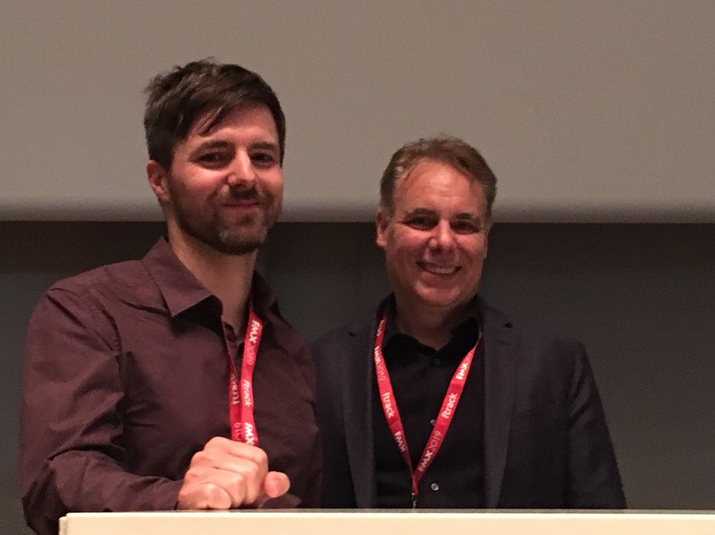
He has studied the movements of big cats, salamanders, birds and white terns before the award winning software Premo has been used for animation.
Nine years ago, Thomas Grummt was attending the talk on “How to Train Your Dragon 1” at FMX. Being a student at Stuttgart Media University, he took the chance to contact the speaker after the presentation. Today, when he walked through the streets of Stuttgart, he said: “I was a bit shocked how much time has passed. But it’s very nice to be back. When I had my presentation yesterday, there were a bunch of students that had basically the same questions that I had back in the days. It feels good to give back a bit.”
We also took the chance to talk to Thomas Grummt during FMX and asked how the increasing realism of cg characters influences animation and what he would recommend to animation students.
Interview: Professorin Katja Schmid
Sound: Peter Ruhrmann
Article written by Professor Katja Schmid


